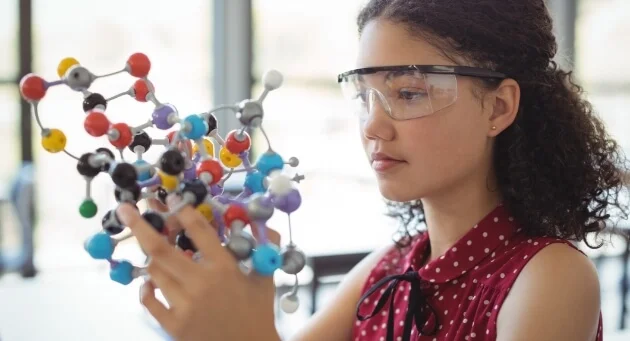Maintaining Musculoskeletal Health As You Age in Singapore

As we get older, it becomes increasingly important to prioritise the well-being of our bones, muscles and joints to maintain a good quality of life. These vital components are what keep us active, healthy and happy. As time goes by, however, we experience a loss of bone density, muscle mass and flexibility that can increase our risk of fractures, pain and mobility issues. There is good news though! By taking proactive measures and making lifestyle adjustments, we can protect our health as we age. This will help us to stay active, independent and pain-free. Feeling motivated to care for your musculoskeletal health? Let’s get started!
In this extensive guide, we will explore long-term strategies and simple habits that promote musculoskeletal health while also counteracting the effects of ageing. We will delve into tips like incorporating strength training and exercises that improve flexibility and balance. Finally, we’ll discuss ways to support bones and ensure muscle function.
Are you ready to slow down the ageing process? Here is your complete guide to maintaining musculoskeletal health as you grow older.
Why the Health of Our Muscles and Bones Is Important
Maintaining bones and muscles is crucial for preserving our ability to go about our daily lives and remain independent. As we get older, the decrease in muscle mass and bone density can lead to frailty, weakness and a higher risk of falls and fractures. These factors can significantly impact every aspect of the day and our overall quality of life. On top of that, poor musculoskeletal health can worsen conditions like osteoarthritis, osteoporosis and lower back pain, which only further limits our mobility and functionality.
Having a healthy musculoskeletal system plays a vital role in supporting overall physical well-being. Strong muscles provide support to our joints by reducing the risk of injuries and improving stability as well as range of motion. Maintaining bone density helps prevent osteoporosis while also reducing the chances of fractures that can have consequences for older adults. Meanwhile, engaging in activity that promotes musculoskeletal health is associated with numerous benefits such as improved cardiovascular health, weight management and mental well-being.
By being strategic in the ways that we can promote bone density, strong muscles and flexible joints into our routines as we age, we can minimise the effects of age-related changes on our system and make sure that it continues to function well throughout the years.
What Are Common Musculoskeletal Problems Among Older People?
Common musculoskeletal issues among older people include the following:
- Osteoarthritis: This degenerative joint disease happens when the protective cartilage that cushions the ends of your bones wears down. This can cause pain, stiffness, and a decreased range of motion. It is very common in knees, hips, hands, and the spine.
- Osteoporosis: Characterised by reduced bone density and increased susceptibility to fractures, osteoporosis is more common in older adults, especially postmenopausal women. It often causes fractures in the hip, spine, and wrist.
- Muscle Weakness: Age-related decreases in muscle mass and strength (known as sarcopenia) cause muscle weakness, fatigue, and decreased mobility. Weak muscles can also increase the risk of falls and fractures, further worsening musculoskeletal issues.
- Joint Stiffness and Reduced Flexibility: Older people often experience joint stiffness and reduced flexibility because of changes in their cartilage and connective tissue, as well as decreased synovial fluid production. This can make it hard to do everyday tasks and activities.
- Lower Back Pain: Degenerative issues in the spine, like disc degeneration, spinal stenosis, and vertebral compression fractures, can cause chronic lower back pain. Poor posture, weak core muscles, and age-related changes in spinal structures often make the problem worse.
How to Maintain Musculoskeletal Health as You Age
There are ways to maintain good health as you age, such as:
- Stay Active: Engaging in activity is crucial for keeping your cardiovascular system healthy, strengthening your muscles and improving flexibility. Exercise also helps with weight management, reducing the risk of diseases and enhancing quality of life.
- Follow a Balanced Diet: Eating a well-rounded diet that includes key nutrients like calcium, vitamin D and protein is key to supporting bone health, muscle function and tissue repair. A nutritious diet also helps prevent deficiencies and promotes well-being.
- Practice Posture: Good posture isn’t about looks! Having good posture plays a significant role in minimising strain on your spine and joints. By maintaining posture throughout your day you can prevent pain and reduce the risk of chronic musculoskeletal conditions.
- Rest and Recovery: Adequate rest is vital for muscle repair, regeneration and overall musculoskeletal health. Quality sleep supports tissue healing, enhances function and aids in recovering from activity.
- Stay Hydrated: Maintaining hydration is essential for lubrication, muscle function and overall tissue health. Drinking water ensures that nutrients reach your cells efficiently while aiding waste removal and preventing cramps or stiffness.
- Seek Professional Advice: Seeking guidance from a healthcare expert provides you with tailored recommendations to care to ensure the well-being of your musculoskeletal system. Consistent examinations and screenings also promote the early identification and effective handling of any issues.
Musculoskeletal Health Frequently Asked Questions
Maintaining musculoskeletal health is easier said than done! To help turn your mission into actionable steps, let’s dive into some FAQs on the health of your musculoskeletal system.
What is musculoskeletal health, and why is it important?
Musculoskeletal health refers to the overall well-being and functionality of our body’s musculoskeletal system. This system includes bones, muscles, joints, ligaments and tendons. It is the foundation of our strength and flexibility and is what supports movement, posture and physical activities. Musculoskeletal health is crucial for maintaining our mobility, independence and overall quality of life.
A healthy musculoskeletal system lets us do daily activities as well as sports, and it plays a vital role in protecting our internal organs and providing stability to our body. Your musculoskeletal system is essential for preventing various conditions like osteoporosis (a condition where bones become weak), osteoarthritis (degenerative joint disease causing pain and stiffness), muscle strains or fractures — all of which can significantly impact our mobility and overall well-being.
What are common musculoskeletal conditions?
Let’s explore some common musculoskeletal conditions or disorders:
- Osteoarthritis: This degenerative joint disease is characterised by a breakdown of cartilage in the joints resulting in pain stiffness and decreased mobility.
- Osteoporosis: A medical condition characterised by weakened bones, which increases the risk of fractures, especially in the hips, spine and wrists.
- Rheumatoid arthritis: An autoimmune disorder that causes joint inflammation, resulting in pain, swelling and stiffness. It often affects multiple joints symmetrically.
- Back pain: Discomfort and limited mobility can be caused by various factors like muscle strain, disc herniation, spinal stenosis or degenerative disc disease.
- Tendinitis: Inflammation or irritation of tendons commonly occurring in areas such as shoulders, elbows, wrists, knees or heels.
- Bursitis: Pain and limited movement caused by inflammation of small fluid-filled sacs known as bursae that cushion and lubricate joints.
- Muscle strains and sprains: Pain, swelling and reduced function resulting from stretching or tearing muscles or ligaments due to sudden movements or overexertion.
- Carpal tunnel syndrome: Compression of the median nerve in the wrist leading to symptoms like numbness, tingling sensations and weakness in the hand and fingers.
- Fibromyalgia: A chronic condition characterised by widespread musculoskeletal pain throughout the body along with symptoms like fatigue, sleep disturbances, and tender points.
- Scoliosis: A condition characterised by an unusual curvature of the spine, leading to discomfort, reduced flexibility and unevenness in the shoulders or hips.
These conditions can vary in severity and may require different treatment approaches, including medication, physical therapy, exercise, lifestyle modifications, and in some cases, surgery.
How can I prevent musculoskeletal injuries during physical activity or exercise?
To prevent musculoskeletal injuries during physical activity or exercise, the following are key to your workout success:
- Warm up properly: Take your time and always stretch.
- Use proper technique: Learn each move with a trainer or online videos.
- Gradually increase intensity: Slow and steady is always a good idea.
- Vary exercises to prevent overuse: You’ll gain more by doing a bit of everything.
- Wear appropriate footwear and gear: Pay attention to your shoes and make sure they aren’t worn.
- Listen to your body: Stop if anything becomes painful.
- Stay hydrated and nourished: Never start a workout without a bottle of water.
- Allow adequate rest and recovery: Less is sometimes more.
What is a good musculoskeletal health diet?
Nutrition plays a major role in your musculoskeletal health. It affects everything from your bone density and muscle strength to joint pain and inflammation. Here are some key diet tips to keep in mind:
How to build and repair tissues with your diet:
- Protein: Aim for 0.8-1 gram per kilogram of body weight daily.
- Calcium and Vitamin D: Aim for 1000mg calcium and 600-800 IU vitamin D daily.
- Vitamin C: Aim for 75mg for women and 90mg for men daily.
Reducing inflammation and pain with your diet:
- Omega-3 fatty acids: Focus on fatty fish, walnuts, and flaxseeds
- Antioxidants: Eat plenty of fruits, vegetables, and whole grains.
- Water: Aim for 8 glasses daily.
How to eat to prevent injury as you age:
- Electrolytes: Potassium, sodium, and magnesium help regulate muscle function and prevent cramps. Look at fruits, vegetables and sports drinks.
- Vitamins and minerals: Zinc, iron, and B vitamins support muscle and bone health while reducing injury risk.
Nutrients that will help you stay active as you age:
- Carbohydrates: Complex carbs like whole grains, fruits, and vegetables offer sustained energy release.
- Healthy fats: Opt for olive oil, nuts, and avocados to support hormone production and the absorption of fat-soluble vitamins.
What are some ergonomic tips for preventing musculoskeletal issues at work or during daily activities?
To prevent musculoskeletal issues at work and throughout the day, follow these simple ergonomic tips:
- Proper posture: Sit or stand with your back straight, your shoulders relaxed, and your feet flat on the floor.
- Workstation ergonomics: Position your computer monitor at eye level. Keep your keyboard and mouse at elbow height with your wrists in a neutral position. Use a supportive chair with adjustable seat height, armrests, and lumbar support.
- Frequent breaks: Stand up, stretch, and change positions every 30 to 60 minutes.
- Proper lifting techniques: Bend your knees and keep your back straight when lifting heavy objects. Use your legs to lift and avoid twisting your spine while you’re lifting or carrying.
- Phone and tablet posture: Avoid holding your phone or tablet between your ear and shoulder. Use headphones for longer calls and always hold your device at eye level.
How does ageing affect musculoskeletal health?
Ageing can have a serious impact on your musculoskeletal health, affecting your bones, muscles, joints, and connective tissues. Here’s a breakdown of some key issues that many people face as they get older:
- Osteoporosis: This all too common issue takes away our bone density, making them fragile and prone to fractures. Women, especially after menopause, are particularly vulnerable.
- Kyphosis: This condition causes your spine to curve inwards, creating stooped posture and back pain.
- Sarcopenia: Muscle-wasting starts around age 30 and accelerates later, leading to weakness, fatigue, and decreased balance, increasing your fall risk.
- Muscle fibre shift: As muscle fibre changes, you lose slow-twitch fibre, which is essential for endurance, decreasing, impacting stamina and recovery.
- Cartilage thinning: Your protective cushion swears down, causing stiffness, pain, and inflammation, especially in weight-bearing joints like knees and hips.
- Joint fluid changes: Less lubrication makes joints stiff and more vulnerable.
- Ligament and tendon stiffness: As they lose flexibility, it limits your range of motion and increases injury risk.
Are there specific exercises or stretches that can help improve musculoskeletal health?
Definitely. Exercise is key when you want to maintain musculoskeletal health as you age. Here’s how to stay healthy as you get older:
- Strength training exercises: Squats, deadlifts, lunges, rows, push-ups, and planks are all excellent for building muscle mass and bone density. This not only improves strength and stability but also reduces the risk of osteoporosis.
- Resistance training: Using weights or resistance bands can further enhance joint stability and support proper biomechanics, leading to a better flow of movement and reduced injury risk.
- Stretching: Yoga, Pilates, and dynamic stretching routines can improve your joint flexibility, reduce muscle tension, and increase your range of motion. This helps prevent imbalances, improves posture, and minimises your risk of injuries.
- Targeted stretches: Focusing on specific muscle groups and joints through stretching can address stiffness, prevent imbalances, and enhance overall mobility.
- Low-impact exercises: Activities like swimming, walking, cycling, and elliptical training provide cardiovascular benefits while being gentle on your joints. They improve stamina, flexibility, and coordination.
- Balance exercises: Tai Chi, yoga poses, and single-leg stands can improve your balance and reduce your risk of falls, which is particularly important as we age.
When should I see a healthcare professional for musculoskeletal issues?
It’s always a good idea to err on the side of caution and seek professional help when dealing with musculoskeletal issues. While some mild aches and pains may resolve on their own, here are some red flags that it may be urgent:
- Sudden and severe pain
- Pain that persists for more than a few days or worsens over time
- Pain that interferes with daily activities
- Joint swelling, redness, or warmth
- Loss of range of motion
- Feeling of instability in a joint
- Numbness or tingling in a limb
- Fever or chills with musculoskeletal pain
Supporting Musculoskeletal Health in Singapore
The best way to support your musculoskeletal health as you age is to work with a healthcare professional. As our bodies change, so do our musculoskeletal needs. A doctor, physiotherapist, or other specialist can assess your individual risk factors for conditions like arthritis or osteoporosis, and create a personalised plan to keep your bones, joints, and muscles strong and functional. This might include exercise recommendations, dietary advice, or possibly medication to manage pain or inflammation. Early intervention and ongoing monitoring by a professional can significantly impact your mobility and independence well into your golden years.
Musculoskeletal Specialist Prices in Singapore
The cost of musculoskeletal treatment in Singapore depends on a few key factors. The severity of your condition is one major factor, of course. A simple sprain will cost significantly less than surgery for a complex fracture. The treatment type that you need also plays a role, with physiotherapy sessions costing less than injections or surgery. Even doctor experience matters as a more established specialist might command a higher fee compared to a recent graduate. Finally, location can influence price, with prestigious hospitals often charging more than smaller clinics. The best way to find musculoskeletal specialist prices in Singapore for your unique condition is to arrange a time to talk with a specialist in person.
Editor’s Choice
When it comes to the top quality treatment and the best musculoskeletal specialist prices in Singapore, Ray of Health is our top pick. They will connect you with a musculoskeletal expert who can identify any issues, create a customised treatment plan, and have you feeling your very best in no time. Why live in pain any longer? Get started today! Contact them online.










